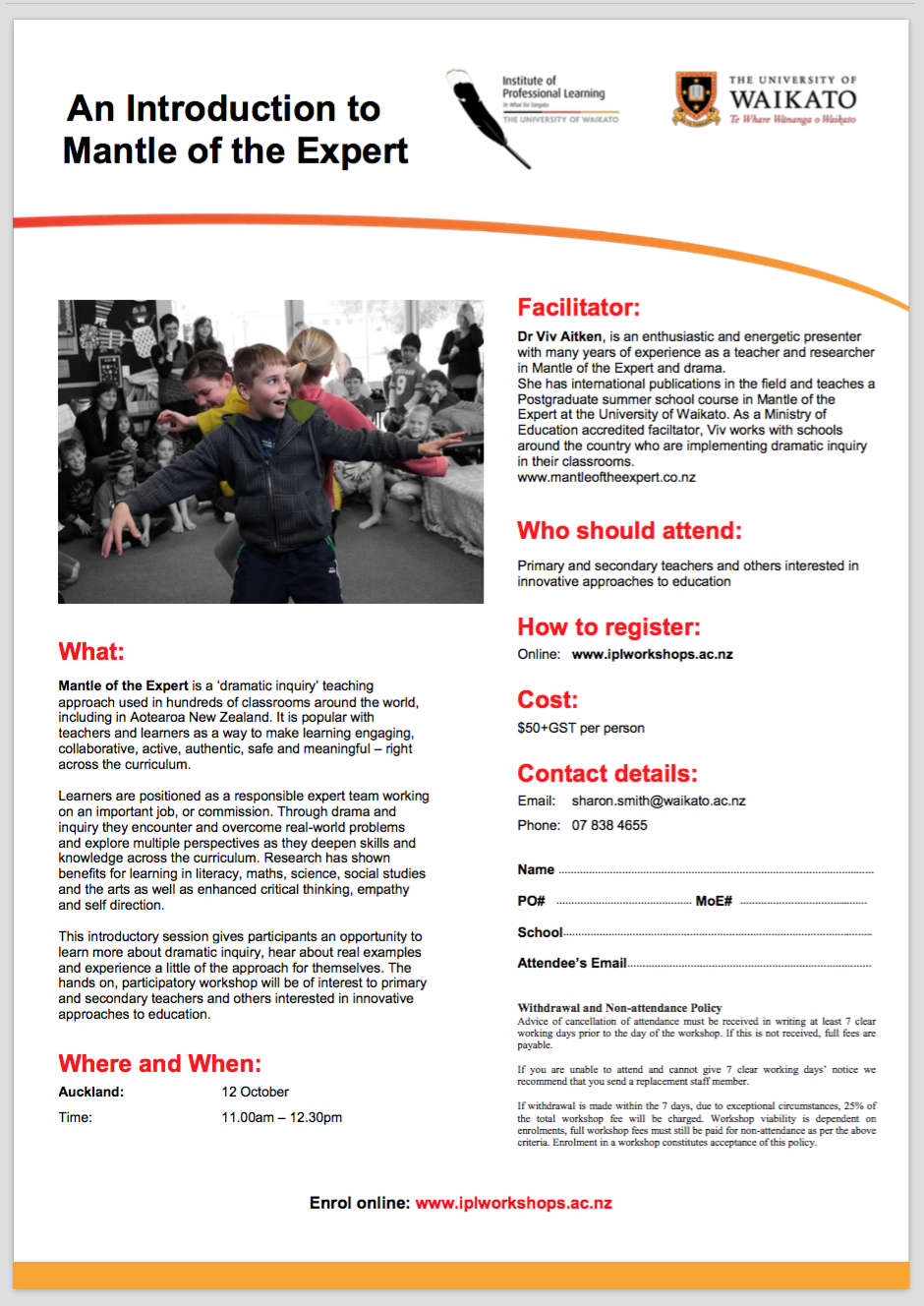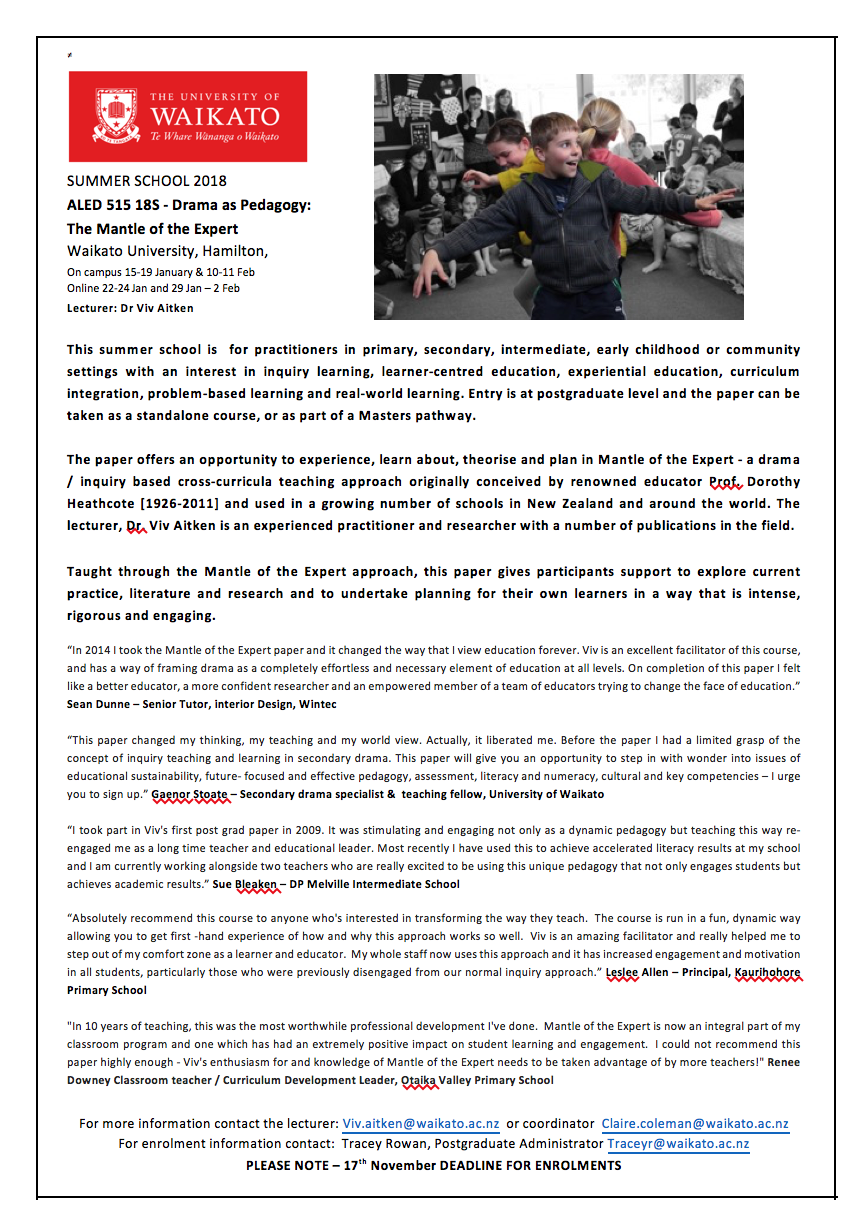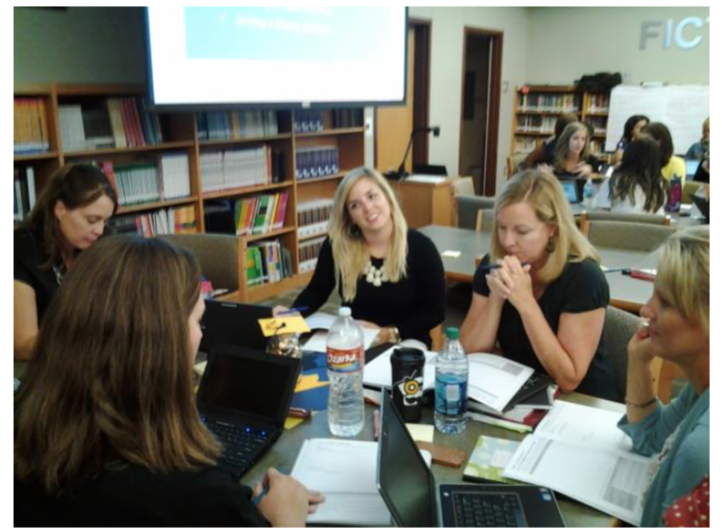One of the key strategies used in Mantle of the Expert is teaching in role – used to introduce a new tension, deliver the commission or present a new perspective. There are many ways a teacher can take on a role (see Dorothy Heathcote’s list of role conventions) but the most common is for the teacher to move into ‘full role’ – ie act, speak and move around as if they are another person.
If you are using teacher in role, it’s important for this to be clearly signalled – in other words, for children to know exactly what you are doing. It’s very exciting for children to hear they are having a visit from a spy, an astronaut, a kaumatua or whatever – and it may seem to ‘spoil the fun’ if we spell out that this person is ‘only’ the teacher in role. However, not to do so runs the risk of ‘spoiling’ things in a more serious way.
A teacher who does not signal the transition into role is denying themselves and their learners the special benefits that can only be found from learning in the overlap of fictional and real worlds. Drama can only do its job where it provides a safe, no-penalty zone for learning in. Unsignalled role is ethically and aesethically unsafe as it risks confusion and resentment from the children. As John O’Toole & Julie Dunn succinctly put it: ‘The teacher who trusts the power of the drama does not need to use deceit’ (O’Toole & Dunn, 2002, p.6)
Where children understand what’s happening, they can frame the experience correctly and feel more confident to adopt the behaviour and speech appropriate to the fictional context. There’s a big difference between what a child will do or say when an adult visits the classroom and the way experts in a team will respond to a visitor – and exploring this difference is kind of the whole point of Mantle! As Brian Edmiston states, ‘One of the core reasons why as a teacher I use drama is because when we create an imagined world, we can imagine that we frame events differently so that our power and authority relationships are changed. A long-term aim of mine as a teacher is as much as possible to share power and authority with students. I want students to have more opportunities to use words and deeds to act appropriately but in ways that are often not sanctioned in classrooms’ (Edmiston, 2003, p.225). If the teacher’s role is not signalled, the power and authority is not shared in the way Brian is describing here. For a fuller discussion of the arguments for clear signalling, check out this article Borat FINAL copy
So, how to signal clearly? Here’s a simple three step transition that can be used each time the teacher moves into ‘full role’. The same three steps can be used to set up the ground rules for any role or drama convention. The three steps are particularly recommended when using teacher in role for the first time. Note that the transition takes place in the classroom in front of the children.
Step 1: Tell them what is going to happen. “In a moment, I’m going to take on a role”
Pause – check understanding (you may need to clarify what ‘role’ means)
Step 2: Tell them how they will know. Declare and demonstrate the signal. “You will know I’m in role when … (I’m wearing this hat, or sitting in this chair, using this special voice, or carrying this kete)”
Pause – check understanding (model a couple of times) “Hat on – who am I? Hat off – who am I now?”
Step 2: Spell out the expectations. “For this to work you need to accept me in role and talk to me / work with me as if I am really X”.
Pause – check understanding.
Note that step three is not phrased as a question, such as “can you agree to behave as if I am X?” Only open up a negotiation if you are actually interested in negotiating with the children. If you simply wish to establish the groundrules for an activity then it is more authentic to state your expectations directly. If you only want children to listen to the teacher in role – say so. If they can talk, ask questions etc, make this clear.
Once these three steps have been followed, the teacher is as secure as they can be that children understand what is going to happen and what is expected. Children are less likely to disrupt the drama by challenging or questioning the role. Having explained the rules of the game, they can get on with playing it – If the rules are not explained, they will focus on working out what they are – possibly out loud. This, according to sociologist Erving Goffman (1986) is human nature.
This is not to say that children will all instantly accept and work with a teacher in role. You can expect them to giggle, or laugh and find it a little strange. You can expect some to ‘push back’ and test the boundaries of the new relationship. When this happens, try not to write off drama as ‘not for me’ or ‘not for this class’. Instead consider it just like any other skill you bring in to the classroom and give children time and practice to become familiar and comfortable with it. In a later post, I will share some tips for dealing with resistance to the teacher in role.
For now, though, here’s a recap of those three steps again:
Step1: Tell them what is going to happen
Step 2: Tell them how they will know
Step 3: Spell out the expectations
REFERENCES:
Edmiston, B. (2003). What’s my position?: Role, frame and positioning when using process drama. Research in Drama Education: The Journal of Applied Theatre and Performance, 8(2), 221–229.
Goffman, E. (1986) Frame Analysis: An essay on the organisation of experience. Boston: Northeastern University Press
O’Toole, J. & Dunn, J. (2002). Pretending to learn: helping children learn through drama. Frenchs Forest, NSW: Pearson Education.




